Physics of Stone Arches
- By Melissa Salpietra
- Posted 10.14.10
- NOVA
Medieval architects were masters at building with stone. But as cathedral design evolved, some medieval architects began to push beyond the boundaries of known structural design and into unknown territory. With the pursuit of taller and taller cathedrals, any errors could lead to catastrophic collapses. In this interactive, try your hand (safely) at constructing a cathedral arch and learn more about the physics behind the arch.
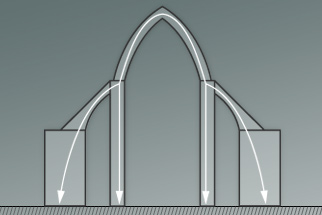 Launch Interactive
Launch Interactive
See if you can build a cathedral arch without it collapsing, and learn more about the forces at work.
Editor's Note: The arch diagrams and thrust lines are simplified for illustrative purposes. Our interactive arch exists in a virtual world that does not completely reflect real-world physics.
Further Reading
Ochsendorf, John. n.d. Interactive Thrust. October 6, 2010. From http://web.mit.edu/masonry/interactiveThrust/index.html
Heyman, Jacques. 1997. The Stone Skeleton: Structural Engineering of Masonry Architecture, Cambridge University Press.
Open University. n.d. The Arch Never Sleeps. October 6, 2010. From http://podcast.open.ac.uk/oulearn/mathematics-and-statistics/podcast-mst209-arch-never-sleeps#
The physics model in this simulation is the Box2D Physics Engine for Flash, originally developed by Erin Catto. http://www.box2d.org/Credits
- Producer:
- Melissa Salpietra
- Designer:
- Tyler Howe
- Developer:
- Dan Hart
- Special Thanks to John A. Ochsendorf, MIT
Related Links
-
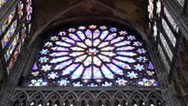
Building the Great Cathedrals
How did medieval engineers construct magnificent skyscrapers of glass and stone?
-
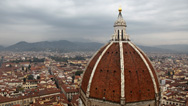
Great Cathedral Mystery
Master craftsmen explore how Florence's monumental dome was built nearly 600 years ago.
-
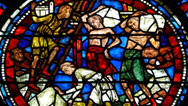
Medieval Stained Glass Science
How did craftsmen of the Middle Ages make stained glass windows using little more than sand, wood, and fire?
-
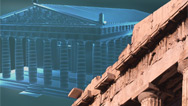
Secrets of the Parthenon
How did the ancient Athenians build this near-flawless icon of Greece's Golden Age?
You need the Flash Player plug-in to view this content.

